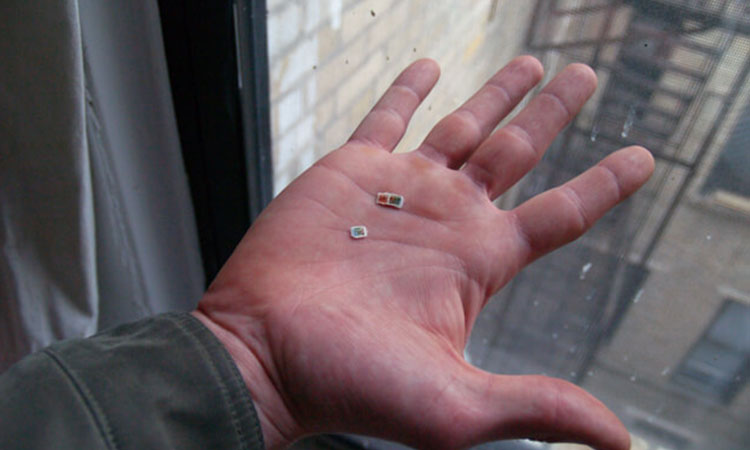
What They Are, What They Do? Hallucinogens are a category of drugs that can cause significant distortions in the way a person perceives reality. They can be derived organically from plants such as mushrooms or they can be synthetic (human-made.)
Hallucinogens can be divided into two categories – classic and dissociative. Classic hallucinogens are drugs such as LSD and dissociative drugs include PCP (Angel Dust) and Ketamine (Special K.) The use of either type of drug can cause the person to see images, hear sounds, and experience sensations that others do not.
Precisely how hallucinogens work is not entirely understood, but studies have suggested that they disrupt communication between brain and spinal cord neurotransmitters that are responsible for the regulation of mood, sense perception, hunger, sleep, temperature, sexuality and muscle control.
Hallucinogenic Drugs List
The most common recreational hallucinogenic drugs include the following:
- LSD (d-lysergic acid diethylamide) (Acid)
LSD is most often found in a liquid that is absorbed into a small square paper or blotter and swallowed, but it can also be inhaled or injected. Effects range from hallucinations and time-space distortions to synesthesia (i.e., seeing sounds and tasting colors), nausea, sweating, and heart palpitations. When used long-term, users may experience psychosis and hallucinogen persisting perception disorder (HPPD).
- Psilocybin (Magic Mushrooms)
Psilocybin a type of mushroom that causes effects such hallucinations, out of body sensations, heightened sensory experiences, space-time distortions, and numbness. Mushrooms can be swallowed whole, brewed as a tea, or dried and crushed into a powder form and sprinkled onto food. If used long-term, persons may experience effects similar to those of chronic LSD use.
- Peyote
Peyote is a cactus native to Mexico and the southern U.S. It can be consumed by being chewed, drank as a liquid, or ground into powder form and smokes. Effects include hallucinations, space-time distortions, chills, and nausea. Long-term use can result in effects similar to LSD and psilocybin.
- DMT (Dimethyltryptamine) and Ayahuasca
DMT is a potent hallucinogenic chemical that is found in certain South American plants and can be synthesized in a lab and vaped or smoked.
Ayahuasca is a brew that includes several plants which contain DMT as well as a vine that contains an alkaloid that blocks the normal metabolization of DMT in the digestive system. It is used traditionally by native people for healing purposes, mainly in the Amazon region but also in other parts of Central and South America.
- MDMA (methylenedioxymethamphetamine, Ecstasy, Molly)
MDMA is most often consumed orally in tablet form, but it can also be smoked or snorted. Effects include euphoria, dehydration, relaxation or increased energy, heightened feelings of empathy and senses, and hallucinations.
Chronic use can result in paranoia, drug cravings, depression, and dependence.
- PCP (phencyclidine, Angel Dust)
PCP is a white crystalline powder that can be ingested, snorted, injected, smoked and laced with other drugs. PCP effects tend to result in more dangerous behavior than that seen among people using other hallucinogens.
In addition to hallucinations, PCP can cause anxiety, agitation, depression, confusion, euphoria, reduced pain sensitivity, and violent behavior. Long-term use can result in addiction, psychosis, paranoia, mental illness, impaired memory, and suicidality.
- Salvia Divinorum
Salvia Divinorum is a plant that can be smoked, chewed, vaporized and inhaled, or mixed into a drink. It can cause hallucination, reduced heart rate, chills, nausea, and impaired coordination.
Are Hallucinogens Addictive?
Yes and no. Most hallucinogens, other than PCP and possibly MDMA do not appear to cause physical dependence and withdrawal symptoms. However, they can be psychologically habit-forming, meaning that people can respond intensely to these drugs as psychoactive substance and compulsively engage in repeated use.
Treatment for the Abuse of Hallucinogens

While most hallucinogens do not have a high potential for addiction, they are commonly abused and sometimes treatment is required to break the cycle of use.
In some cases, people who are abusing these drugs benefit from a medical detox. A medically-assisted detox involves patient supervision while the body cleanses itself of psychoactive substances.
During this time, the patient is monitored 24-7 by medical staff and addiction specialists to ensure that complications, if they occur, are treated appropriately.
After detox, patients are encouraged to participate in long-term treatment in our center. We offer both inpatient (residential) and Intensive outpatient formats. Inpatients may transfer to outpatient treatment after completing a stay of at least 30 days.
Both formats offer both individual and group behavioral therapies, counseling, health and wellness services, 12-step program meetings, and holistic approaches such as yoga and art and music therapy.
Upon discharge, former patients can take advantage of aftercare planning services for continuing recovery and alumni activities.
Our programs are structured with various components of evidence-based treatment practices and holistic approaches to treatment that provide our patients with the knowledge and tools they need to be successful in their recovery.
If you or your loved one is suffering from substance abuse, please seek help as soon as possible.